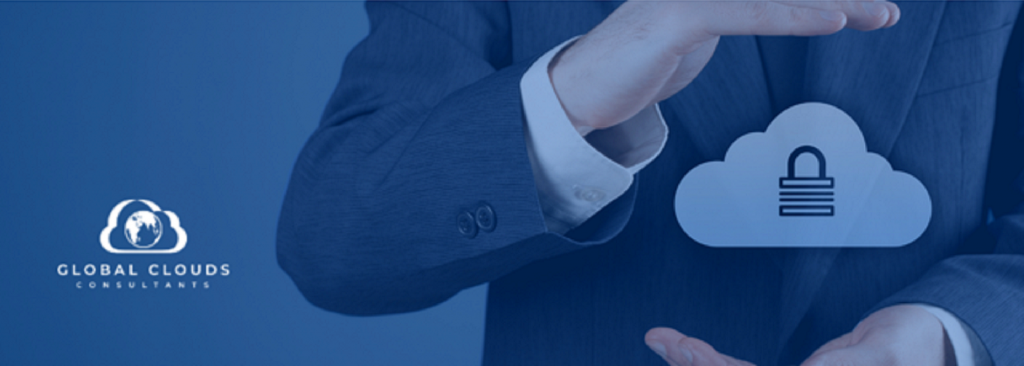Cloud Security: Whose Responsibility Is It Anyway? Part I
Sairam J, Director, Global Clouds Consultants, June 27,2021

More often than not, we have come across companies making it to headlines due to cloud security issues. Last week, while discussing in our team meeting, we figured out that the majority of our clients fear cloud security breaches the most. And when we looked at the broader picture, we realized that it was also one of the main reasons that companies find cloud computing so intimidating or overwhelming, or even confusing for some.
Enterprises and businesses are still skeptical about storing their business information in cloud systems. It is primarily because of security concerns. The majority of the business leaders believe that it is the provider’s responsibility to provide security in cloud deployments. However, most cloud breaches happen because the users mismanage controls. Therefore, businesses must learn the fact that real cloud security is a shared responsibility.
Understanding Cloud Shared Responsibility
Unlike conventional on-premises data centers, cloud security is more challenging and complicated as the IT department has to deal with the cloud infrastructure and systems provided by the cloud solution company.
Since both the cloud solution companies and clients are involved, they are both responsible for the safety and security of the cloud architecture.
In a cloud shared responsibility model, there is a clear definition of the security roles and responsibilities of the involved party. It implies that the involved parties will have a clear understanding of their roles in managing different operations, attributes, functions, and properties. This way both the cloud security services provider and client can implement a secure cloud system at reduced business costs.
Enterprise Cloud Strategy
To reach a certain level of cloud security in your organization, you must ensure that the concerned business leaders agree on the cloud governance policies and strategy.
It not only guides the business and IT teams to maintain cloud security at different levels but also helps analyze requirements more efficiently and makes risk acceptance processes more flexible. Moreover, it leads to better cloud infrastructure planning.

The strategy should define the business expectations and how the public cloud should be controlled. It can vary as per the providers as well as the service type ( IaaS, SaaS, or PaaS). In a multi-cloud system, there are more threats and complications that increase the risk. Due to this reason, every domain, application, and service needs a distinctive strategy. That said, it is crucial to find the weakest link as it can make the entire system vulnerable at any given time.
AWS Shared Cloud Responsibility Model
Security of the Cloud
AWS is responsible for the Security of the Cloud. They hold responsibility for safeguarding the cloud architecture that consists of hardware, networks, software applications, operations, and processes that execute AWS Cloud services.
Security in the Cloud
As per AWS’s shared cloud responsibility model, the customer is responsible for all aspects that he selects from the AWS services. It outlines all the configuration tasks that the client needs to do. Find out more about the AWS shared cloud model here.
What is your Share Of Cloud Responsibilities
No matter which service type it is, every business must learn about the aspects they are directly responsible for.
● Business Information: Your business information is not visible to your cloud providers. So, you are in direct control of it and how it can be used.
● Application Code: Irrespective of how your business is utilizing the cloud services, you must understand that your applications and the corresponding codes are your responsibility. So, you should ensure to keep them secure throughout the development and deployment stages of the application lifecycle.
● Access Management: Identity and access management (IAM) is again, the client’s responsibility. It includes authentication processes, multi-factor authentications, single sign-on (SSO), certificates, authorizations, user generation, passwords, access keys, and so on.
● Resource Configuration: Businesses need to manage the operating system of the cloud architecture. However, the control varies depending upon if it utilizes server-based resources or serverless resources. The former needs more security control whereas the latter is easier to manage with a cloud provider’s assistance.
Besides the given responsibilities, you should ensure to protect anything and everything of your business that is linked with the cloud. It also includes the on-premises framework along with the IT systems, user devices, and software applications.

It is advisable to build your cloud monitoring and tracking system to identify security breaches for verticals that come under your authority. Irrespective of the cloud provider’s system, you should always understand your duties.
What is the Cloud Security Services Provider responsible for
It may look like the client has to attend to many cloud security aspects but the cloud services provider takes the bigger load. They are in charge of the following facets:● Network, Datacenters, & Physical Hosts: Your provider safeguards the hardware using software and other physical methods. Using efficient backup & restore and disaster recovery solutions cloud providers keep their servers safe from any kind of physical disasters or tampering. Cloud providers such as AWS follow several strict protocols to protect the data centers and networks from any malicious attacks.
● Virtualization Layer: By implementing virtualization, cloud security service providers control the setup of physical IT resources. It establishes secure segmentation of CPU, storage, memory, and GPU that keeps your applications, business information, and users safe. The virtualization layer acts as both a barrier and an entrance, giving access to authorized resources and securing against any malicious intrusions from any layer or external environment.

Always Begin By Outlining Your Cloud Security Strategy
There is no clear definition of cloud responsibilities for each scenario. Therefore, you should outline all the shared responsibilities clearly with your cloud security services provider. Besides helping you streamline your efforts, it also makes both parties accountable for their share. In case of conflicts, one can always refer to the service-level agreements to clear up the confusion and carry on with the effective implementation of cloud security strategy.
Putting ourselves in your shoes and understanding your concerns, at the end of our meeting, we were able to conclude that clear communication goes a long way. So, we at GlobalClouds Consultants are determined to provide the best cloud security solutions with comprehensive definitions of shared responsibilities and transparent protocols.
In part II we will discuss other cloud security topics like how it is different in transit and at rest, different layers of cloud security infrastructure, and security automation. Stay tuned!